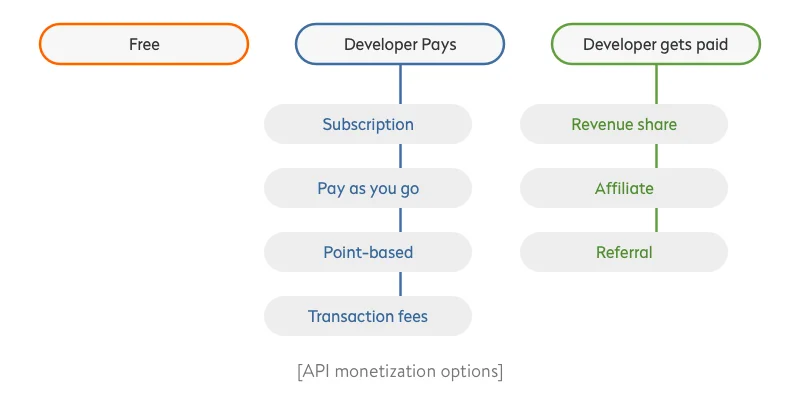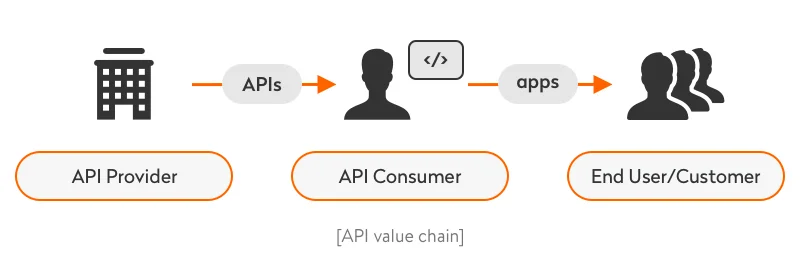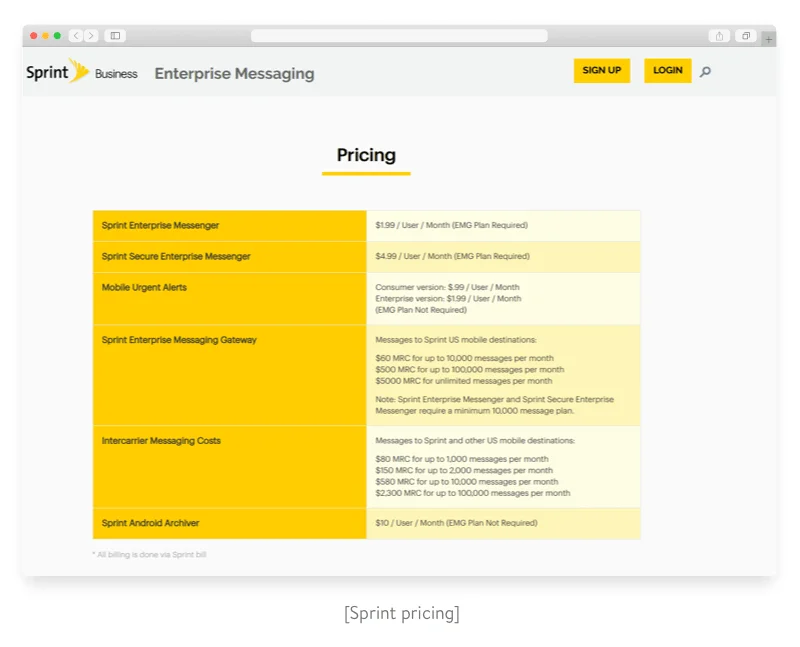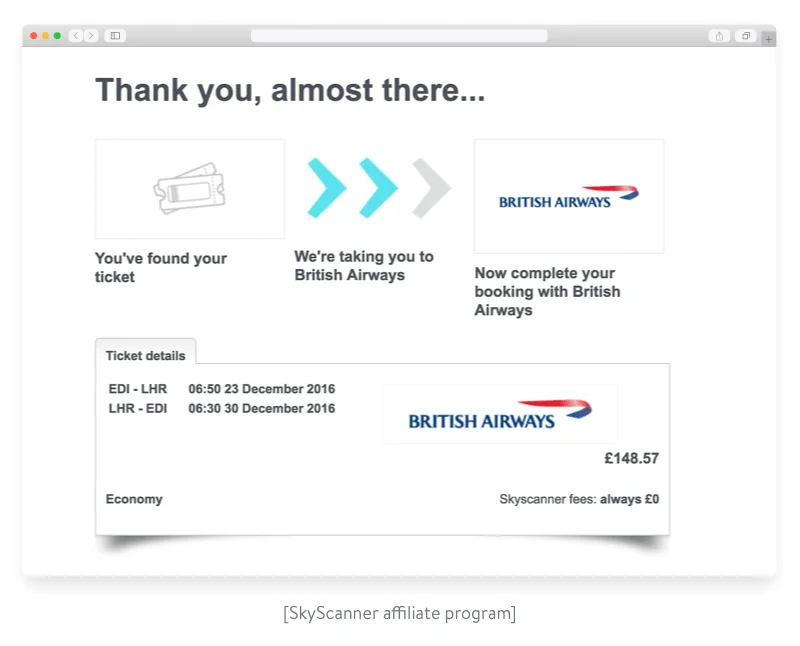An application programming interface, or simply an API, is a tool that allows third-party applications to communicate with your service. APIs are a win-win for companies that provide them and for developers. With APIs, developers can use ready-made solutions instead of spending time and money reinventing the wheel. In turn, companies providing APIs can earn good money and promote their products by offering ready-made solutions to certain challenges.
For instance, instead of spending thousands of hours drawing a map and adding routing functionality, developers can implement a map using the Google Maps API and pay Google to use it.
There are currently more than 22,000 APIs on the market according to ProgrammableWeb. Major tech players like Google, Amazon, and Twitter create their own APIs to ease developers’ lives. Moreover, some companies like Twilio and Telestax build their businesses around offering a wide range of APIs for different needs.
But what are the incentives for tech giants to invest in APIs and why is the popularity of APIs still growing exponentially? In this guide, we answer these questions and discuss the main ways to monetize your API.
Why should you provide an API?
In essence, an API is a layer that connects discrete services and pieces of software to more powerful and multifaceted digital systems. APIs let smaller apps benefit from technologies that would take too many resources to develop – technologies such as machine learning algorithms, complex image recognition software, and trustworthy online maps.
While the benefits for those who use API-based business model are quite clear, companies may question why they should bother providing an API and why some companies provide them for free. The purposes of making your own API are the following:
- Create a new revenue stream and improve business performance. The first and very obvious reason for creating an API is to get an additional revenue stream. There are several possible monetization models. What’s more, you open up the possibility for other people to create something really groundbreaking on the basis of your product.
- Check how your brainchild performs. Just as private APIs can help you learn from your mistakes within the secure borders of your company, partner APIs can help you learn within a circle of several devoted strategic partners. In this way, you can see how your brainchild performs before providing it to a wider public audience. Plus, by getting several other companies to use your APIs you can create new opportunities to grow and make your product ubiquitous.
- Drive users to your platform. Your company’s API can be used to drive traffic to your application and improve your company’s reputation. Take Twitter as an example: thanks to its API, websites (especially news apps) can without hassle embed tweets into web pages. In turn, users clicking on these embedded tweets go directly to Twitter and can read the replies. In the same way, developers can embed Apple Music on a website to let visitors listen to clips.
- Make products less complex. Assume you provide a complex SaaS solution that has wide functionality. But some users need only one or two features and don’t want to pay for the whole product. In this case, thanks to APIs, you can offer your customers only the functionality they want.
- Exchange information with your business partners. In the past, exchanging information among business partners was pretty hackneyed. People would send data in a spreadsheet at a partner’s request. The introduction of APIs made possible continuous and effective data exchange. For instance, DHL APIs allow companies to track, manage, and create shipments.
- Provide reusable functionality. You can build reusable APIs instead of problem-specific software solutions. Reusable interfaces can be the base for various company products (mobile, web, and desktop apps, for example). You can even build ephemeral products that might be needed for a specific short-term purpose (an app for an overnight marketing campaign) that you can afford to use once and then abandon, since implementing these products won’t require huge expenses, time, and effort.
- Solve problems of shadow IT. If you don’t offer easy access to your internal information systems, some employees may resort to unapproved solutions from outside your company, and may try to integrate them on their own. Lacking the appropriate security and reliability, these third-party solutions, when improperly integrated with your information systems, may cause unexpected costs or, even worse, losses of revenue and company reputation. Programming interfaces can control shadow IT solutions or help you avoid the usage of unsanctioned software inside your company altogether. With a clearly defined API, it’s possible to let your employees build plugins to satisfy their needs.
As you can see, there’s more than potential revenue incentivizing tech companies to provide their own APIs.
API business models review
IBM gives a strict categorization of API monetization models. We’ll discuss two the most profitable categories of direct monetization models. The first is when an API consumer pays directly for using an API. The second is when an end user interacts with an application using an API and produces revenue for the API provider as a result. In turn, the API provider shares some of this revenue with the API consumer.

But before we discuss how to pick one of these models, let’s define three roles and the architecture of API value chain:
- API provider — the company that creates and offers an API
- API consumer, or simply developer — the developer who implements the API
- End user — the person who uses the application containing the API

We’ve dealt with the basic terminology, so let’s cut to the chase.
Revenue from API consumers
In this type of model, developers, integrating APIs for business they run, pay the API provider for using the API.
1. Subscription model
Choosing this model involves charging directly for the API itself, typically on a monthly or yearly basis.
A subscription model seems the most straightforward, but it can also be the most challenging if the service you offer doesn’t have a good product–market fit. To be able to successfully monetize your API, you first need to show potential customers how they would benefit longer term if they used your solution.
One way to attract developers is to create a sandbox where they can test functionality and decide on using your API. This is the strategy PayPal uses.
Another way to attract developers is with the freemium model — offer basic functionality for free and charge for more advanced functionality. Companies that choose the freemium model usually target businesses that want to start small but are likely to continue using the API even when they reach a much larger scale.
Different companies have different needs, so it may be reasonable to include multiple tiers. For instance, Pabbly API, which allows for easy subscription billing, has Starter, Rookie, and Pro plans. The Starter plan costs $19 a month and allows for managing 500 users. The Rookie plan has a 2,000-user limit but costs $59 a month, while the unlimited Pro version costs $99 a month.
The main complaints by developers about this model is the possibility of paying for unnecessary resources. This drawback leads API providers to switch to another model: pay-as-you-go.
2. The pay-as-you-go model
The pay-as-you-go, or usage-based, model means that a developer pays only for what they use (for instance, $1 for 100 API calls).
Here arises the question: how and when should you charge API consumers? There are various options. We’ll describe those used by well-known API providers.
The first API strategy is used by Amazon Web Services. An API consumer adds a credit card to their AWS account and Amazon charges monthly based on usage, sending a detailed bill. Google Maps API also generates a detailed billing report for API consumers.

The second scenario is used by Twilio. In this scenario, an API consumer makes an initial payment and money is kept on their balance. The system regularly (typically, every month) deducts from that balance and sends a bill. When the balance hits a certain amount (say $5), the API consumer is notified about it. When the balance reaches $0, the project is suspended.
The main disadvantage of this model is its unpredictability: API consumers can’t know for sure how much to pay each month.
3. Point-based model
This model can also be called unit-based or utility-based, and it’s similar to the pay-as-you-go model. In this model, an API provider values each API resource and assigns it a unit price. API consumers pay for the number of units they use and can purchase extra units as needed.
Google AdWords is an example of an API that prices access on a per-unit basis – API consumers are billed $0.25 per 1,000 API calls. Google Cloud defines prices for each metric type.
4. Transaction fees
This is a commonly used effective API model for payment gateways. In this model, the API consumer pays a fixed fee for each transaction made by end users. Systems like PayPal, Braintree, and others receive direct value from each transaction that takes place in any app where their API is embedded.
For instance, Braintree’s processing fee is 2.9% plus $0.30 per transaction. There’s no subscription deal available, and the payment system makes money every single time a user transfers money with the help of their service.
Sometimes, API providers use more than one of these options. For instance, the Sprint Messaging API, which can be used to send SMS and MMS messages to CDMA handsets, charges according to the number of units (messages) and has several tiers for enterprise clients.

API providers can mix these models. Take the Google Maps API as an example. It offers $200 monthly free credit and charges for each unit after that credit is spent.
API providers share revenue with API consumers
This model is commonly used when an API provider wants to promote their product and incentivize developers to use their APIs.
- Share from ads
In this case, the API provider offers advertising as part of their platform. API consumers integrate advertising in their apps, providing revenue for the API provider. In turn, the API provider shares some of that advertising revenue with API consumers.
TripAdvisor’s API has been adopted by more than 700 partners and has been used to create about 50,000 third-party apps. Embedding the TripAdvisor API into other apps has brought TripAdvisor a lot of new traffic and raised brand awareness. Since TripAdvisor receives the majority of its revenue from click-based ads and display ads, raising awareness and inviting new users to their website has amounted to increased revenue for the company and additional revenue for API consumers.
- Referral and affiliate programs
With an affiliate program, an API consumer includes an API in their app and gets paid each time an end user clicks (cost per click) or somehow engages (cost per action) with the API provider’s content. A referral program works like an affiliate program, but the API consumer gets paid only when an end user purchases goods or services from the API provider.
For example, the Skyscanner Affiliate Program encourages travel websites to include the Skyscanner API. When an end user buys tickets from the API consumer’s website, Skyscanner shares 50% of the generated ticket revenue with the API consumer.

At Yalantis, we believe APIs are essential for optimal user experience. They shorten development time and provide benefits to API providers, the developer community, and end customers at the same time. Depending on the size and nature of your business, picking the right API monetization model can be tricky. But if chosen right, API business model can benefit your business.
Want to check out our software development expertise?
We provide custom software development services
See our expertiseRate this article
4.2/5.0
based on 247 reviews






